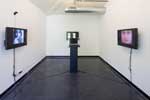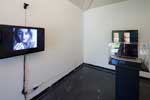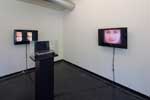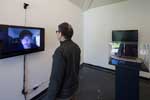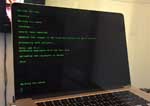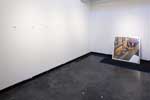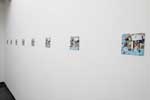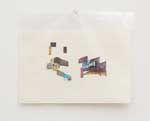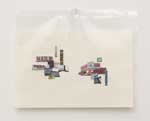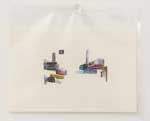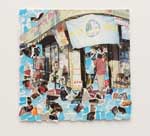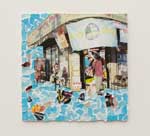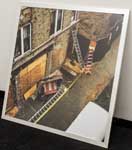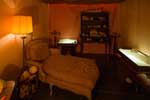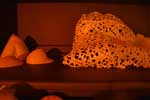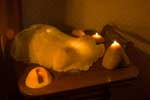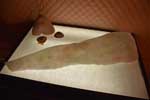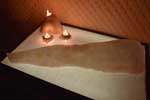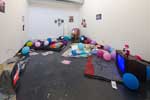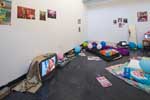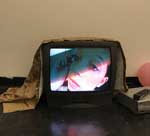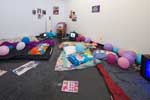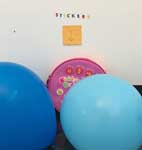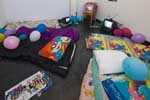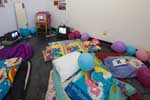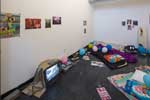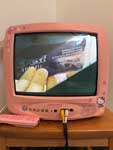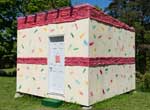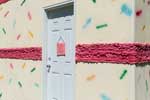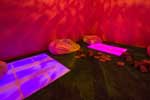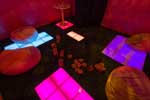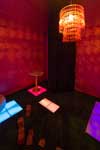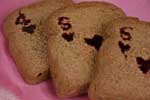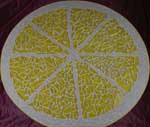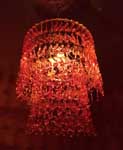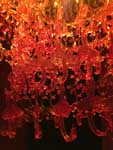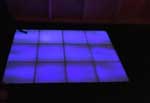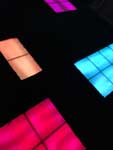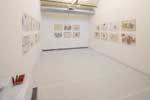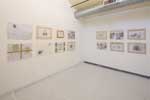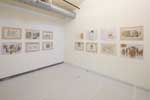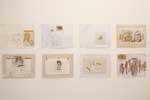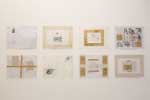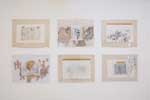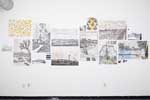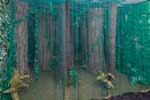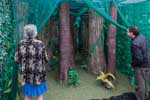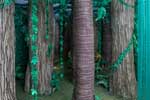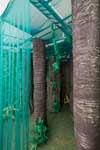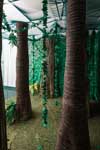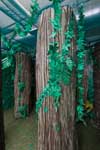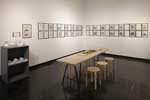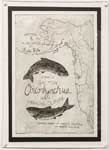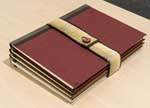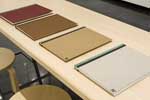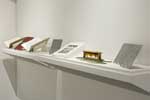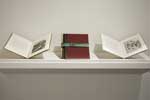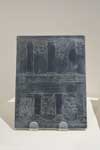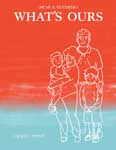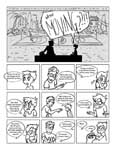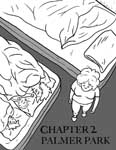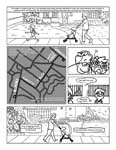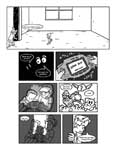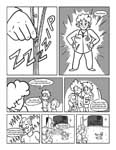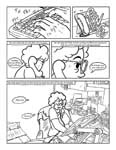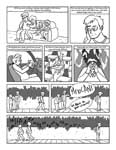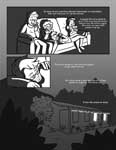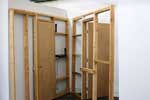Brian Leighton Bartz
The implementation of labor systems in an age of digital networks: a critical framework for artistic resistance
Abstract
This paper presents a framework for examining the fundamentally new ways in which systems of labor manifest on digital networks. Exploring the predominant theories of immaterial and digital labor, the paper traces their origins through the history of computing, digital network infrastructure, and contemporary algorithmic techniques, going on to conclude how these unprecedented labor systems have helped establish a new paradigm of capitalist control, enacted at a foundational level through social communication.
The paper continues with an analysis of a number of artists and artworks who are working through issues raised in the first two chapters, ultimately working towards a potential framework for artistic resistance in the context of such issues.
The paper culminates in a final section that was written in conjunction with the artwork being created for this thesis, both helping to contextualize the work as well as being a part of it.
Charlie Perez
Towards El Norte is an installation dealing with post-diasporic identity creation and the materialization of aspiration prevalent in contemporary immigrant communities. The exhibit consists of two sets of eight collages, a 40"x40" framed inkjet print and a photo book documenting the source material for the work.
Chapter 1 re-configures Hito Steyerl's poor image as a tool for understanding forms of cultural production informed by displacement and informing diasporic identity. This peripheral poor image arises out of necessity in the face of the neoliberal market and operates as a method for reconciling cultural amnesia.
Chapter 2 defines the parameters for a contemporary cosmopolitanism prevalent in the urban periphery and touches upon the possibilities presented in resulting post-global paradigms in regards to visual cultural production. The work of periphery-centric artists Guillermo Gomez-Peña, Coco Fusco and Ken Lum provide an aesthetic grounding for understanding the creation of this peripheral cosmopolitanism.
Chapter 3 surveys the work made alongside writing this document as a synthesis of the ideas explored in chapters one and two.
Chloe Nielsen
Fragmentation of the body, Tactility of the skin: a feminist dialogue
Abstract
This thesis is an exploration of material through the female form. The writings of Elizabeth Grosz have informed an argument for the value of the feminine in a world dominated by a masculine hierarchy. Louise Bourgeois inspired the installation setting, Eva Hesse inspired the collaboration with material, and Juliana Cerqueira Leite informed the performativity of the casting process. Each material has its unique qualities that have been experimented with throughout the course of the process. The abject tactility of the materials is the focal point of a domestically decorated, suffocatingly feminine space.
Ciara Collins
This thesis situates contemporary Youtube youth communities within a greater history of American youth culture, using the genre known as 'Get Ready With Me' videos as an entry point. In these videos, a Youtube user films themselves as they go about the process of 'getting ready' for some event, often the first day or middle or high school. They also routinely incorporate an element of running verbal commentary which I find compelling and insightful.
By selecting 'Get Ready With Me' as my focus, I hope to begin a conversation about teen girlhood in the digital era. At the same time as I personally relate to these videos, I also see social media as being central to these girls' daily lives in ways that it was not when I was younger. As a result, I have understood the act of writing itself as necessarily performative, requiring that I constantly renegotiate my relationship with the teen genre as I revisit it as a now-outsider.
This document contains my own reflections on the subject matter, and is intended to work alongside the studio component of the thesis, in which I appropriate and recontextualize 'Get Ready With Me' videos in hopefully meaningful ways.
Daphne Lyda
art is a piece of cake is an interactive installation space that I built from the ground up. I have removed my work from the white cube gallery, a sterile space that has been institutionally exclusive to women from its conception, and created a space of my own. I explore the use of alternate spaces as exhibition spaces and their history of being a space for marginalized artists. I extend this history by not only giving myself my own installation space, but building it, too. I'm taking agency over every element of my work by designing and handcrafting it all myself. Throughout the process of creation, I've developed an intimate relationship with my materials while employing traditional skills of craft. I have spent months creating a space that asks people to enter and interact with on their own terms. I've removed it from the gallery in hopes that the social codes that restrict the relationship between interaction and viewership will be removed as well. Although this is a piece of artwork it is not untouchable. It is meant to be experienced and therefore requires participants as the final element to my piece. My piece is more than just an exhibition space - it is a giant piece of cake.
Isabella Mimi Weiss
An experimental investigation of the effectiveness of art as rhetoric
Abstract
With this project I attempt to prove that the artist can have autonomy and authority over the meaning and function of their creation without sacrificing aesthetics for activism and without depending on language as a crutch. I suggest that social issues regarding digital immersion are especially difficult to address and that many artists who "deal with" these issues only serve to perpetuate them with their work. After defining my qualifications for "success" and "failure" in social practice, I analyze contemporary artists and art events that address digital issues through these terms. With these results, I have attempted to develop strategies that might render my creative project more successful in conveying meaning, critiquing a state-of-being, and actually provoking change. A brief summary of my results will be added here after receiving feedback at the gallery opening. As an artist with particular intentions, I take issue with the trend to consider the artist as abstract facilitator or unconscious creator. In a national state in which individual and corporation are merging on social media, government and corporations are merging in Washington and corporation and artist are merging in the museum and biennale, maintaining and developing the capacity of the artist to combat negative social trends is essential. I am with this project to develop techniques which heighten my ability to use art as a rhetorical device.
Jamie Serbia
This thesis is a dissection of the concept of the road trip, its iconography, and its associated media, done via a series of ink drawings on paper and maps taken from personal photographs. The written portion discusses the road trip through the framing devices of film, music, and United States history. It explores the thematic and aesthetic nuances of the work of H.C. Westermann, Jean-Michel Basquiat, and Brad Kahlhamer, in conjunction with my own work, to create a broad overall narrative about what the road trip symbolizes in contemporary life.
Kats Tamanaha
Rebuilding the rainforest: simulacra in a post-natural world
Abstract
This thesis is about trying to hold on to a lost present in the future. We are currently witnessing entire ecosystems drown around us. In just a few hundred years, the face of this planet will look drastically different. Instead of trying to imaging what it will look like, my installation visualizes how human society might simulate present-day habitats in a time when they no longer exist. To accomplish this, I have built a fully immersive synthetic rainforest out of recycled and scrap materials and invited visitors to enter the space as they would a future history museum. My goal is to create a phenomenologically disorienting experience that is as beautiful as it is deeply disturbing.
The written component of this thesis includes a brief overview of the science of climate change followed by an explanation of my installation through the lens of philosopher Jean Baudrillard's Simulacra and Simulation. I draw from Baudrillard's theory of simulacra as well as relevant contemporary social and artistic practice to set the stage for a future wherein an exhibit like my rainforest would be a logical response to habitat loss.
Lee Belcher
The myth of chiron: personal storytelling through comics and mythology
Abstract
This thesis explores the capacity of comics to retell existing stories, specifically myths. Because myths tend to lack a single primary source, but are shared broadly though various means, they are both specific and flexible. My comic retells the Chiron myth, taking advantage of its flexibility to convey my personal relationship to the story. In this thesis, I explain how I reinterpreted the myth and utilized the comics medium to achieve my goals.
Leila Pyle
I'm a salmon: the role of Oncorhynchus ssp. in storytelling and place-making the Pacific Northwest and implications in a changing climate
Abstract
My thesis is an exploration of the complex relationship the Pacific Northwest has with salmon as a symbol of place. It is a meditation on the fragility of salmon in a changing climate as well as an exclamation of what this means for humans and their environment. The body of work I created for my thesis is a set of artist books that are published in both a fine press edition and a low budget zine. Through etchings and text this work sets out to inform people about the relationship between salmon, people, and place in the Pacific Northwest and the realities and implications of this in the face of climate change. The written portion of my thesis reflects upon this work and how it is informed by a larger history of science and ecology being combined with and communicated through art, as well as the role of community activism and education in many such projects. This written work also expands upon the scientific and cultural history of salmon that is touched on in my artwork and investigates the importance of salmon in other storytelling and education efforts as well as how these efforts work to define the place of the Pacific Northwest to those who live here.
Luis Valenzuela
Multiply: engaging technical potential in digital images
Abstract
For this thesis, I created an interactive website,
Multiply (
www.multiply.art), populated by images that change and evolve as users interact with and add to the site. The following chapters outline my desire to allow visitors to have a sense of the potentials and unknowns of digital screens and images rooted in their technical properties, and how I have structured this project to produce an unpredictable, engaging, and lively browser environment.
Oscar Guerrero
This thesis is a graphic memoir of my family's experiences as immigrants in Glendale, California. What's Ours looks at different stages in our lives, from different perspectives of each family member, throughout the lat fifteen years since our immigration. This paper seeks to situate my narrative story within the context of American immigration, specifically exploring how immigrant narratives are formed in the cultural climate of the United States, and what's at stake specifically looking at my family's individual narrative.
Steven Chiboucas
Self-awareness and the collaging of auditory spaces
Abstract
The focus of my thesis is to create an opportunistic space for inhabitants to heighten their own levels of self-awareness via participatory actions.
